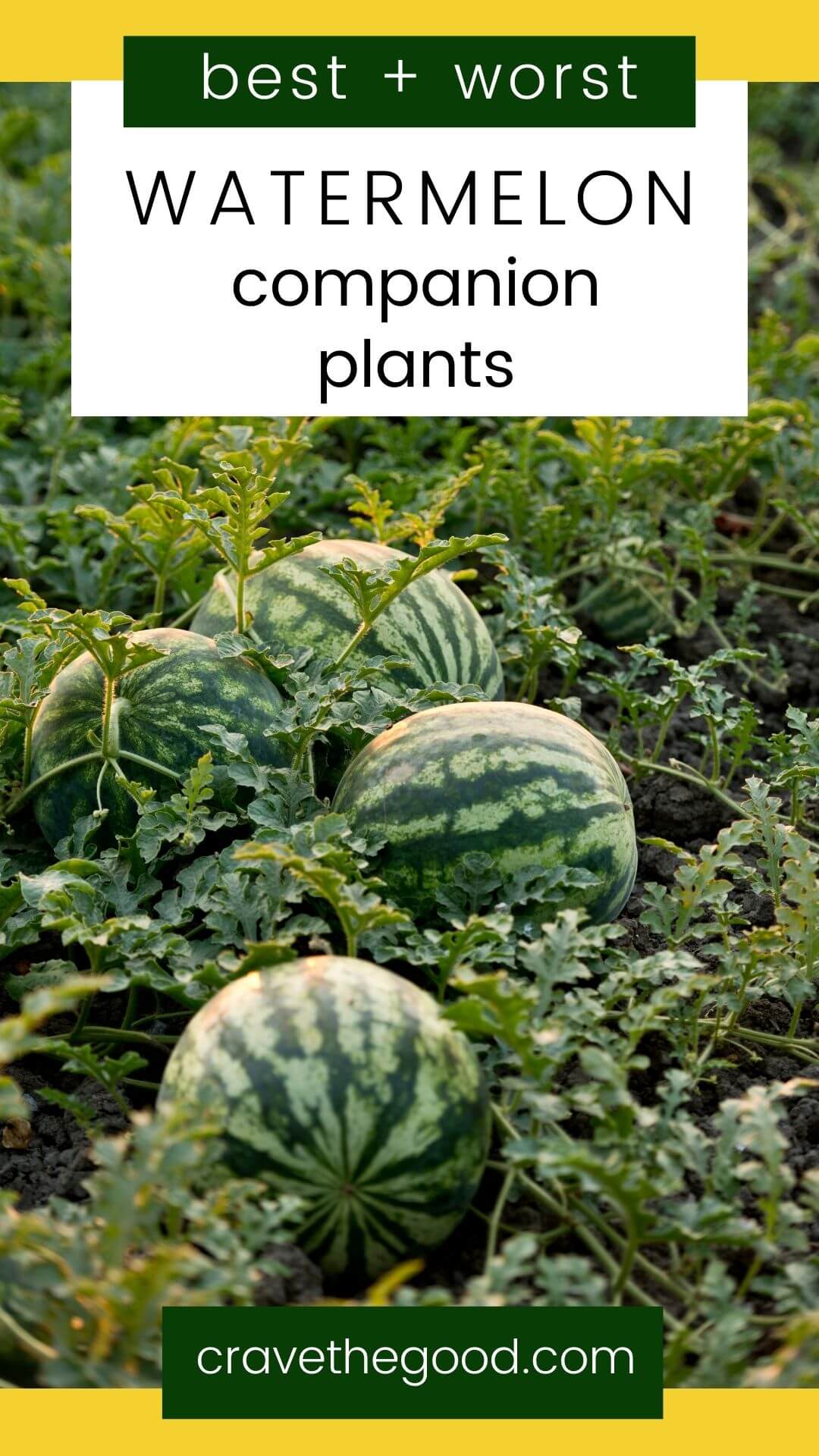Grow Watermelons That Are Sweeter Than Ever With These Companion Plants
Grow Watermelons That Are Sweeter Than Ever With These Companion Plants
Watermelons are a delicious and refreshing summer treat. But did you know that you can grow even sweeter watermelons by planting them with certain companion plants?
Companion planting is a gardening technique that involves planting different types of plants together to benefit each other. Some plants help to attract beneficial insects, while others help to repel pests. Some plants even help to improve the soil quality or provide shade.
When it comes to watermelons, there are a few specific companion plants that can help to improve their sweetness. These plants include:
- Basil: Basil is a fragrant herb that helps to repel whiteflies, which can be a major pest of watermelon plants. Basil also improves the flavor of watermelons, so it's a win-win.
- Marigolds: Marigolds are another fragrant herb that helps to repel pests. They also help to improve the soil quality, which can benefit watermelon plants.

- Nasturtiums: Nasturtiums are a flowering plant that helps to attract beneficial insects, such as ladybugs and lacewings. These insects help to control pests, which can help to keep your watermelon plants healthy.

- Lettuce: Lettuce is a cool-season crop that helps to suppress weeds. It also helps to improve the soil quality, which can benefit watermelon plants.

- Peas: Peas are a nitrogen-fixing plant, which means they can help to improve the nitrogen content of the soil. This can benefit watermelon plants, as they need nitrogen to grow well.

In addition to these specific companion plants, there are a few general rules of thumb to follow when companion planting watermelons. First, avoid planting watermelons near cucumbers, squash, or potatoes. These plants are all susceptible to the same pests and diseases, so planting them together can increase the risk of problems.
Second, choose companion plants that have similar water and sunlight requirements. Watermelons need full sun and plenty of water, so you'll want to choose companion plants that can tolerate these conditions.
Finally, be sure to plant your companion plants at the same time as your watermelon plants. This will help to ensure that they all get off to a good start.
By following these simple tips, you can grow sweeter watermelons by companion planting. So get out there and start planting!
Watermelons are a delicious and refreshing summer fruit, but did you know that there are certain plants that can help them grow better? Companion planting is the practice of planting certain plants together to benefit each other. For example, some good companions for watermelons include sunflowers, marigolds, and nasturtiums. These plants attract pollinators, which help to pollinate the watermelon flowers and increase fruit production. They also help to deter pests, such as cucumber beetles and squash bugs.
If you're interested in learning more about companion planting for watermelons, I recommend visiting Gardenia Inspiration. This website has a wealth of information on the topic, including a list of recommended companion plants, tips for planting and caring for watermelons, and a troubleshooting guide.
FAQ of watermelon companion
Q: What are good companion plants for watermelon?
A: Some good companion plants for watermelon include:
- Sunflowers: Sunflowers attract pollinators, which are essential for watermelon pollination.
- Coneflowers: Coneflowers help to deter pests, such as cucumber beetles and squash bugs.
- Coreopsis: Coreopsis helps to improve the soil and attract beneficial insects.
- Mint: Mint helps to repel pests, such as mosquitoes and ants.
- Oregano: Oregano helps to improve the flavor of watermelon.
Q: What are bad companion plants for watermelon?
A: Some bad companion plants for watermelon include:
- Cucumbers: Cucumbers and watermelon are both members of the Cucurbitaceae family, and they can compete for resources.
- Melons: Melons and watermelon are both heavy feeders, and they can compete for nutrients.
- Potatoes: Potatoes can harbor the same pests and diseases as watermelon, so it is best to avoid planting them together.
Q: What are the benefits of companion planting with watermelon?
A: There are several benefits to companion planting with watermelon, including:
- Attracting pollinators: Companion plants that attract pollinators, such as sunflowers and coneflowers, can help to ensure that your watermelon plants are pollinated properly. This will lead to a better harvest.
- Deterrent pests: Companion plants that deter pests, such as coreopsis and mint, can help to protect your watermelon plants from damage.
- Improving the soil: Companion plants that improve the soil, such as oregano, can help to provide your watermelon plants with the nutrients they need to grow strong and healthy.
Q: How do I plant companion plants with watermelon?
A: When planting companion plants with watermelon, it is important to choose plants that will complement each other. For example, sunflowers and coneflowers should be planted at the edge of the bed to attract pollinators. Coreopsis and mint can be planted in the middle of the bed to deter pests. Oregano can be planted at the base of the watermelon plants to improve the flavor of the fruit.
Image of watermelon companion
- Cucumbers: Cucumbers and watermelons are both members of the Cucurbitaceae family, so they have similar growing requirements. They also complement each other well in the garden, as cucumbers help to suppress weeds and attract pollinators.
- Lettuce: Lettuce is another good companion plant for watermelons. It helps to suppress weeds and improve the soil quality.

- Peas: Peas are nitrogen-fixing plants, which means they add nitrogen to the soil. This can be beneficial for watermelons, as nitrogen is an important nutrient for their growth.

- Marigolds: Marigolds are known for their insect-repelling properties. They can help to protect watermelons from pests such as aphids, cucumber beetles, and squash bugs.

- Nasturtiums: Nasturtiums are another good insect-repelling companion plant for watermelons. They can also help to improve the soil quality.

Post a Comment for "Grow Watermelons That Are Sweeter Than Ever With These Companion Plants"